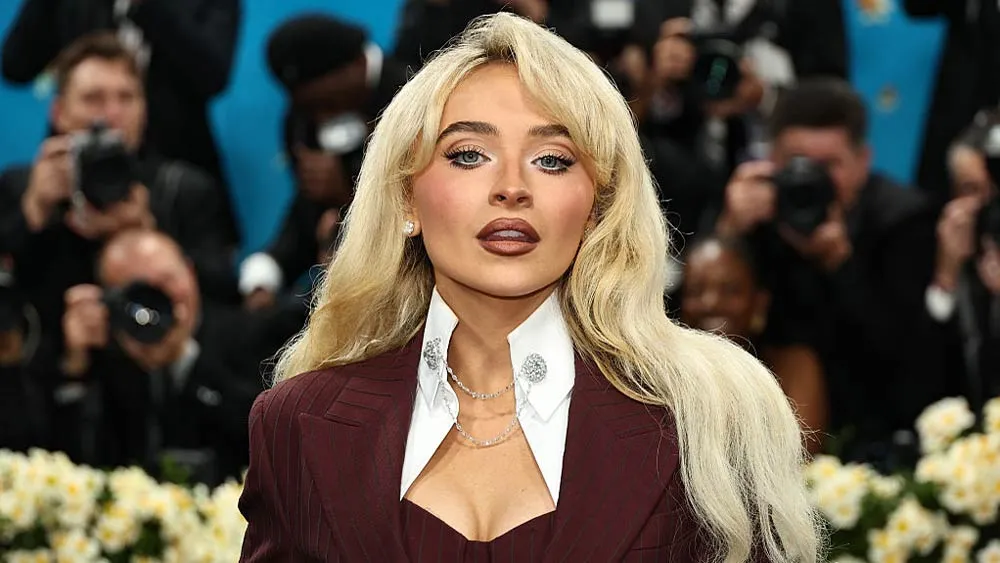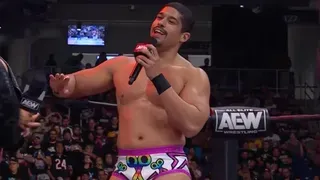October 18, 2014
LGBT Comic Book Characters Going Mainstream
Kilian Melloy READ TIME: 6 MIN.
When the loveable red-headed Archie of Archie Comics died this year saving his gay best friend Kevin Keller it was a turning in the history of LGBT characters in mainstream comics. It's one thing to let your gay best friend do your hair, quite another to take a bullet for him.
But LGBT characters aren't new to comics. Northstar, the first major superhero to come out, came out back in 1992 even though some would say it was poorly done.
"It was a terribly written story in which Northstar finds an HIV positive baby in the trashcan, and it motivates him to come out publicly as gay," said Evan J. Peterson, author and professor of creative writing. "He was not in a very popular book."
Trina Robbins created the first comic featuring a lesbian in 1972 in an underground anthology. For her, she just felt she was writing a story about her roommate.
"It was a feminist underground anthology and the first issue had ten women in it, and I did a story called "Sandy Comes Out" about my roommate deciding or discovering that she was a lesbian," Robbins said. "It was the first comic about a lesbian ever done, but when I did the Sandy story, it didn't occur to me that I was breaking ground."
Robbins still insists that underground comics provide the most accurate LGBT representation with cartoonists like Alison Bechdel and Joan Hilty, creator of the Bitter Girl series, noting that while mainstream companies have tried to increase LGBT presence, they still lack any realistic elements. She uses Batwoman as an example.
"It's hard not to notice that she, and all of her girlfriends are babes," Robbins said. "I don't see one butch woman like Lea DeLaria."
Andy Mangels, best-selling author and the first openly gay comic book guy and cofounder of Prism Comics, agrees with Robbins that LGBT presence has been on a rise, but still needs work.
"When I was co-writing Star Trek novels for Paramount, and we wrote the first novel that featured, in a major way, a gay character and his partner, it broke a lot of passive taboos in the Star Trek franchise," Mangels said. "I often say to other people, 'Why have you not included GLBT characters in your work? What is stopping you?' Several writers are saying, 'You know what? The only thing that's stopping me is I haven't thought about it.' And that asking has led to now gay characters in the Star Wars universe."
North Star was the first major superhero character to "come out" as gay, but most comic book fans agree he didn't have much of an impact on the mainstream community. He was first introduced to society in 1979 and "came out" in 1992.
Creative writing professor Peterson said Milestone Comics by DC is a good example of diversity within the main superhero companies.
"Most of the superheroes were people of color, and a lot of them lived in intercity environments and faced poverty and crime and things like that from a 90s perspective," Peterson said. "This wasn't Batman; it was the 90s comic book version of gang violence etc. [there were] a lot of superheroes of color and queer superheroes, and I suspect it was just too much to have gay black superheroes in the 90s, and it could have really taken off but it was more like an experiment that ran its course."
Diversity has been hard to come by in comics, even with characters like Mrs. Marvel.
"Marvel has trouble keeping sales of diverse-character-led books up," said 23-year-old Sean A. Guynes, a master's student in American Studies. "Ms. Marvel is a series about a teenage, female, Pakistani Muslim American shape-shifting superhero. It's number 86 on July's sales chart, which is admittedly higher than mainstays like Captain America and Daredevil, but it is certainly not impressive."
Mangels believes that major companies should hire more gay comic book creators, artists and writers, in order to increase the amount of accurately portrayed LGBT characters. He recognizes the need for a reflection of oneself in the characters.
"Almost everybody who's GLBT working in comics, creating stories, is doing so for smaller independent companies," Mangels said. "They aren't working on major franchise material like at DC or Marvel or Archie. Little by little creators are being hired again by those companies, and that's the biggest problem: They need to work on featuring more women working in their books, people of color and GLBT creators."
Rachel Edidin, comics writer, editor and journalist and co-editor of "Beyond," an anthology of queer SFF comics, views the emphasis on the LGBT status of the character as the issue at hand.
"The most significant milestone we have yet to reach, I think, is a state in which queer and trans characters are normal. Instead of DC going 'look how progressive we are - there's a minor supporting character in 'Batgirl' who's trans,' we expect that representation to be part of the normal spectrum we see - in protagonists, as well as supporting cast."
Most characters in comic books are too perfect and unflawed because writers don't want to offend LGBT characters "so it's resulted in GLBT characters that have no flaws, and part of what makes the character interesting to read about is that they have flaws, and it can make it a little bland at times, which is one thing that makes Batwoman really stand out," said Mangels.
Batwoman came out as a lesbian in 2006 and has had multiple girlfriends within her story, serving as one of the most progressive LGBT comic book character. Still, she faces her own problems like when DiDio (DC's Co-Publisher) announced at the 2013 Baltimore comicon that superheroes can't get married, "conveniently just months before the issue of Batwoman in which Kate Kane was supposed to marry her girlfriend," Guynes said.
With regards to who includes more LGBT diversity, most comic book fans will agree that Marvel does it better, regardless of the fact that DC has the only comic with an LGBT lead, Batwoman.
"At the moment, Marvel is doing it better; but I think the real test is going to be how much sticking power they give those characters - whether they end up erased in five years for another reset, or whether, when that reset inevitably happens, they're the characters who endure through," Edidin said.
It's important to remember that artists and writers have less power in mainstream comics which results in the lack of LGBT portrayal.
"You have to realize that DC is owned by Warner Brothers and Marvel is owned by Disney," Mangels said. "They have a lot of things they're concerned with, like how will it work in the South, will we get boycotted by one million moms by this book or that book."
Both have managed to remain progressive though.
"Given the heteronormative, the big two companies are making great strides in the right direction," said 31-year-old comic reader and mass media major Nicholas Yanes. "DC comics introduced their first transgender about a year ago; the Green Lantern character turns out to be gay. More companies are becoming comfortable about having LGBT characters in the background as characters."
Archie is a good example of a comic that accurately depicts diversity. Though the world of Archie may seem pristine, it features diversity with regards to gay characters and multiracial relationships.
"I felt uneasy about the whole comic, and the whole Archie world, which felt like this somewhat-liberal utopia where everything is perfect and diverse enough to say, 'Hey, this is diverse,' but only in a superficial sense," Guynes said. "Yes, Archie dies to save Kevin Keller, his gay best friend, but I think what's more interesting is Kevin Keller's story, which you can read in his own comic."
Luckily for Archie fans the death took place in an alternate universe, which means Archie will continue on.
Despite the improvements, comic book companies still have a long way to go with regards to including bi and trans characters in comics, including gay villains, and having more LGBT characters as single title characters in comics.
"I think we've gone far enough ahead that we can have a malevolent queer villain in the same way they love Joker or Mystique or Bullseye or someone like that," Peterson said.
While comic book characters are going mainstream in print, they haven't quite taken on the big screen yet. The only known ones on film are in "Scott Pilgrim" and "Watchmen."
"I'm guessing if it happens, it'll be an independent though - the queer and trans characters in big franchises don't so far tend to have the star power and name recognition it takes for a company to gamble on them for a feature film," Edidin said.
Regardless, the future looks bright for LGBT comic book characters.
"I think the future is full of extreme possibilities; the characters will become more accessible," Mangels said. "Within three years no one will even bat an eye if there's a GLBT character in any comic book. The stigma will have dissipated so much that no one will care in a bad way. We're in a world accepting GLBT people, and comics, thankfully, are in the forefront."
Kilian Melloy serves as EDGE Media Network's Associate Arts Editor and Staff Contributor. His professional memberships include the National Lesbian & Gay Journalists Association, the Boston Online Film Critics Association, The Gay and Lesbian Entertainment Critics Association, and the Boston Theater Critics Association's Elliot Norton Awards Committee.





